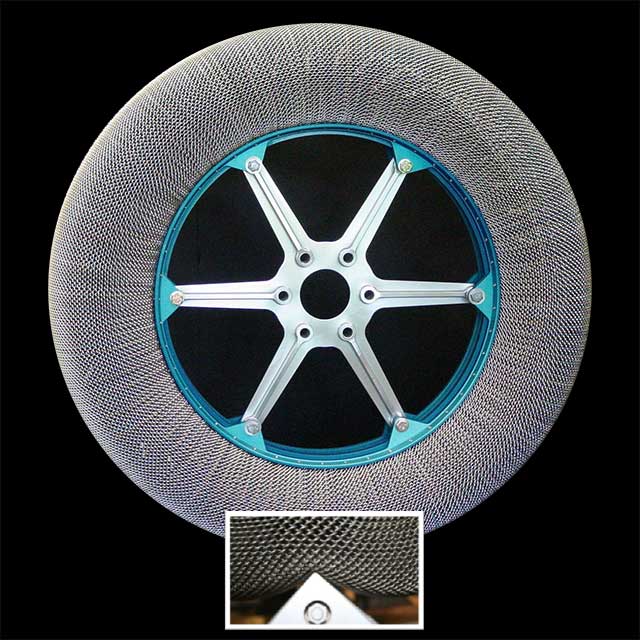Researchers of space research agencies and tire companies have developed more durable tires for adverse terrains, making improvements from those used in the past during the lunar missions.
The referrals of 3 major wheel designs developed by NASA and Russian Space Agency, ROSCOSMOS during the early phase of their lunar mission had been used in the research.
ROSCOSMOS had developed a wire mesh wheel of eight rigid rims with bicycle spokes and metal cleats for its lunar vehicle Lunokhod (Moon Walker in English) between 1969 and 1977.

NASA's Modularized Equipment Transporter (MET), the 2 wheel cart used by astronauts during Appolo mission 14 in 1971, had smooth rubber tires with nitrogen filled inner tubes manufactured by the Goodyear Company.
The Lunar Roving Vehicle, the last NASA vehicle to visit the Moon used four large flexible wire mesh wheels with stiff inner frames to prevent over-deflection. Thin tread strips which were attached to the vehicle helped its movements in the soft lunar soil.
Engineers at the NASA Glenn research center revamped the Apollo age tires using new designs, materials, and technology for the future lunar and Mars exploration.
NASA Glenn engineer Vivake Asnani and his industrial partner Goodyear tires developed the airless Spring Tire that consists of several hundreds of coiled steel wires woven into a flexible mesh. The tires have the ability to support heavy loads. Industrial testing found that the spring tires are able to give good traction and durability in soft sand and on rocks. This reinvented wheel also received an R&D 100 Award for Top Inventions of the Year.

The research for the new wheels became more serious as the Mars Curiosity Rover faced serious wheel damage during its expeditions. The harsh terrain of the red planet and the damages caused to the wheel raise major concern about completing the rover's pre-planned missions.
NASA Glenn engineers plan to develop several Spring Tire prototypes to improve the traction in soft sand, durability and to reduce overall weight. It is believed that these advanced tires would be better suited for the future rovers for Mars exploration.
Deforming steel wires are a major problem faced by the tires during its experimental tests in simulated Martian terrain at the NASA's Jet Propulsion Laboratory (JPL).
Development of spring tires with nickel-titanium alloy was a solution for the issue. The alloy had the capacity to change its shape and regain it during the exploration. The experimental test of the advanced tire in NASA JPL's Mars Life Test Facility had impressive results. The atomic structure of the alloy allowed it to adjust to the terrain by changing shape and regaining it later.
The three major adjusting properties of the newly developed tire make it more sustainable during their Martian or Lunar environment. Firstly, they could allow the rover to explore higher terrains which is currently difficult. Secondly, they might not sink in the loose Martian soil like the rigid wheels and could carry heavier payloads in them. They could also travel at higher speeds than the current Mars rovers.









